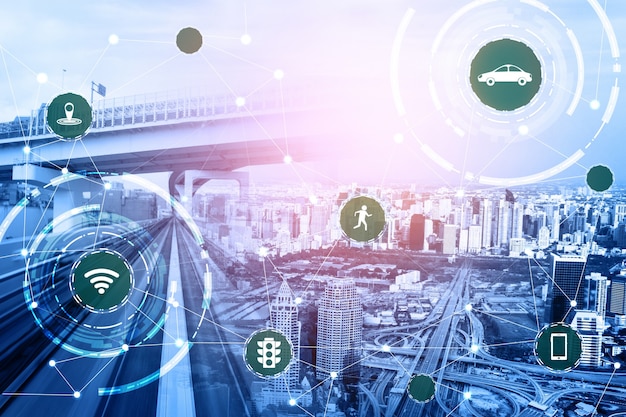Smart Transport Technology: Concept for Future Car Traffic on Road – Free to Download
Smart Transport Technology: A Vision for Future Car Traffic
The concept of smart transport technology plays a crucial role in shaping the future of car traffic on our roads. As urban areas grow and the number of vehicles increases, the need for efficient and safe transportation systems has never been more important.
What is Smart Transport Technology?
Smart transport technology involves the use of advanced systems and innovative solutions aimed at enhancing vehicle and traffic management. These technologies seek to streamline traffic flow, reduce congestion, and improve safety for all road users. With the rise of connected devices and communication networks, the future of transportation is looking bright.
Key Features of Smart Transport Systems
- Real-time Data Collection: Technologies that gather data on traffic patterns and vehicle behavior help in making informed decisions regarding traffic management.
- Vehicle-to-Everything (V2X) Communication: This allows vehicles to communicate with each other and infrastructure, enhancing safety and traffic flow.
- Intelligent Traffic Signals: Smart traffic signals adapt to real-time traffic conditions, minimizing wait times and reducing emissions.
- Automated and Connected Vehicles: These vehicles can anticipate and respond to traffic conditions, increasing safety and convenience for drivers and passengers.
The Benefits of Smart Transport Technology
Implementing smart transport technology offers numerous advantages:
Improved Safety
With advanced communication and monitoring systems, the likelihood of accidents decreases significantly. Drivers receive timely information about road conditions and potential hazards, fostering a safer driving environment for everyone.
Reduced Traffic Congestion
Smart systems enable better traffic management, leading to smoother traffic flow and reduced congestion during peak hours. This not only saves time for drivers but also contributes to lower pollution levels.
Increased Efficiency
With real-time data at their fingertips, transportation agencies can make quick decisions to address issues as they arise, ensuring a more efficient use of resources and infrastructure.
Conclusion
In conclusion, smart transport technology is set to change the way we think about car traffic on roads. By prioritizing safety, efficiency, and real-time communication, we can create a more organized and effective transportation system for the future. Embracing these innovations is vital for sustainable urban development and improved quality of life for all.












